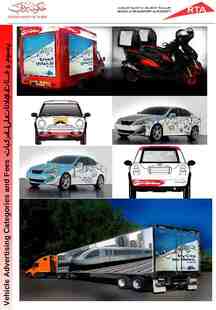Related Service Consultation Strategies for successful
56 Slides1.66 MB

Related Service Consultation Strategies for successful integrated practice

Goals for session Understand what related services bring to the preschool classroom Training of OT/PT/SP Resources they bring to the classroom Explain the roles of therapists in early childhood programs How therapists support teachers to achieve optimal student learning

Goals for session Identify best practice models for related service consultation Collaboration/problem solving versus expert Shared responsibility Flexible implementation Appropriate use of paraprofessionals Identify barriers to implementing these models. Results of a recent Ohio survey

Goals for the session Explain what administrative supports can promote effective consultation. Using your vision to empower staff Critical system supports to make it happen. Review and assess the research on related services consultation. Studies of related services consultation

What do OT, PT, SP bring to the preschool classroom Related service professionals use a clinical reasoning/ problem solving approach to every child and every situation. OTs and PTs tend to focus on foundational skills and physiological issues: Arousal/ attention Activity level Movement and posture Eye-hand coordination

OT/PT/SP training Therapists Does the child have adequate stability to safely get up and down from the floor, can he process auditory input, can he zip and snap his jacket? Often think broadly about function trained in medical schools Bring a health perspective to the classroom Receive extensive anatomy, neuroscience coursework Understand human function from biomechanical and neurological perspectives.

Base intervention on careful analysis of performance and activity demands. Need hands on, direct observation to consult on a child’s program. Child centered / family centered interventions are emphasized. Use a clinical reasoning model that always begins with the individual.

Therapists understand the medical system, but do they understand the educational system? Training therapists on services in schools is highly variable across allied health programs. School based practice is not a stated standard in OT/PT accreditation standards.

How has PT training changed in recent years? All PT programs are doctoral level (by 2020). A goal of the DPT is to allow PTs to move into independent practice. Early childhood programs may be in a position of hiring more contract PTs who own their own practice. What is the extra year of PT training? Diagnostic courses, evidence based practice, research, medical specialization.

OT and SP training Training is primarily at the masters level. Curricula emphasize science based practice and evidence based practice. Therapists are trained to work across settings (nursing home, hospital, school, rehabilitation) They are trained to work with all age groups.

When does medical background present as an issue? OT/PT/SP are best integrated into the education system when they are employed by the school district. Contract therapists, who also work in a medical center, have a difficult time making the shift to educational practice. Contract therapists need to spend time with teachers in school buildings to understand the culture, the rules, the system (not always feasible when paid by the hour)

What do therapists bring to the early childhood classroom? Children with medical needs Understanding of medical issues, how to accommodate the equipment, positioning.

Children with assistive technology needs

Children who struggle with feeding or basic functional skills.

Children with underlying physiological problems Children with autism Focus on sensory processing Children with cerebral palsy Focus on posture, movement, strength, transitions within the school building, activities of daily living.

What are roles of therapists in support of the teaching staff? Indirect services (to teaching staff and team) on behalf of the child May reframe the child’s problems; identify and explain underlying impairments. What is perceived as behavior may reflect difficulty in sensory processing Behaviors may reflect disorders in motor planning, arousal, sensory processing.

Therapist roles in support of teachers Provide information and materials Create handouts for recommendations Provide information about a disability or diagnosis Provide information about evidence based practices. Teach alternative methods for instruction Introduce Picture Exchange Communication Systems (PECS) Help to write Social Stories Assist in creating Intellitools programs

Tools that we recommend for the classroom.

Recommend modifications to the classroom environment Suggest a bean bag chair for a child with sensory needs Suggest a tent for quiet time of children with high activity levels. Recommend a rocking chair for calming.

Sensory corner for child to calm

Recommend adapting activities or materials Obtain adapted spoon, cups, plates. Obtain easel for vertical surface drawing

Provide support, encouragement Assure teaching staff that they are implementing appropriate interventions for difficult medical issues. Provide feedback about child response to teacherdesigned interventions.

Consultation Styles Technical assistance TA is most appropriate when: Defined problem Equipment needs May be short-term

Examples: Create Intellikeys program Problem solve how child will use new wheelchair on the playground.

Consultation styles Collaborative consultation Uses the problem solving method Requires a relationship of parity Requires trust and follow through All parties take responsibility for outcomes Requires understanding of each others’ roles.

Examples of collaborative consultation Development of a behavioral plan for child with ADHD Adapting the preschool space for a child with severe cerebral palsy in wheelchair. Creating adapted methods for child with low vision to participate in snack, playground, art, circle.

Best practice consultation Consultation is a structured type of teaming Begins with establishing a relationship. Works best when trust and respect have been established. The relationship should be one of parity and mutual respect.

How does consultation work? Teachers seek OT/PT/SP involvement early, prevent problems from escalating. Teachers and therapists need opportunities to engage in collaborative problem solving and functional analysis of behavior.

Child’s problem is understood in the context of the environment and the curriculum Child Preschool curriculum Social and physical environment

Therapist consultation requires comprehensive evaluation Therapist needs to observe child in multiple settings, at different times of day. Interview with teacher is critical to obtain her/his perspective of the problem. Consultation is based first on the teacher’s perception of the problem. The child’s problem must be viewed within the demands of the preschool environment and the curriculum.

How does consultation work? Interview with parent, other therapists and staff may be helpful. Problem solving: Teacher and therapist engage in problem solving (brainstorm first) and identify 1-2 strategies to try first. Planning: Teacher and therapist identify who is responsible for what action and who collects data on the child’s response (shared responsibility)

Monitoring progress: Both monitor behavior and progress. Assessment: Meet to assess effectiveness of strategy and move to next strategy or plan to continue

Flexible scheduling Consultation involves moving in-between direct services (activities with the child) and indirect services (instructions to teaching staff) It requires frequent monitoring, data collection, and team interaction.

Flexible Scheduling Works best with a 3 and 1 or other flexible scheduling model. The 3 and 1 model defines collaboration as a priority. Opportunities to collaborate were cited as one of the biggest barriers to using the consultation model in recent survey of schoolbased OTs. Holland (2007)

Appropriate use of paraprofessionals Paraprofessionals should be asked to perform only techniques that can be easily and safely implemented. Should not be given programs likely to result in rapid change and need for frequent upgrading of the program Therapists have certain legal restrictions on how they can use aides/assistance. Supervision is required by licensure law, but is loosely defined.

Myths dispelled Consultation takes less time than direct intervention methods. Consultation means handing off the problem. Consultation is not needed until the teacher can not manage the problem. Therapists are needed only when a child is failing to make progress.

Barriers to collaborative consultation and how administrators can remove them Barriers Teachers and therapists do not know each other’s roles Teachers and therapists do not feel parity, lack trust. Potential Solutions Make sure therapists are invited to school events, in-services Schedule regular social activities. Create a collaborative culture Work on equity issues, pay, status, support proximity.

Barriers Teachers and therapists do not have time to collaborate and plan. Holland (2007) Sometimes therapists and teachers do not value collaboration. Potential Solutions Allow for and build in planning time on a regular basis Use 3 and 1 model (therapists see child for 3 weeks and then have a week for meeting with teacher). Encourage creative use of time, therapists meet with teacher while assistant runs class.

Barriers Teacher waits until behaviors are unmanageable. Consulting therapist does not take ownership of the problem Potential Solutions Encourage use of consultation when the problem is first identified to prevent difficult situations. Suggest that both therapist and teacher monitor/assess the effects of the new strategy or equipment. Alternative solutions should be offered.

Barriers Therapists are only needed when the child fails to make progress. Potential Solutions Preventive services are optimal. Therapy services are most effective when intervention is early.

Example of consultation for behavior problem Illustrates what an occupational therapist might bring to problem solving to complement skills of the teaching staff.

PROBLEM: Child pushes and hits a child who sits too close to him during circle time Teacher and OT complete a functional analysis to identify a basis for the behavior and to implement a strategy to prevent his pushing/hitting. ANTECEDENTS Is child angry? Child does not appear angry. The children close to him did nothing to cause anger. NO.

ANTECEDENTS No apparent antecedents other than a child sat close to him. Possible cause is sensory defensiveness or hypersensitivity to touch. In other situations, the child appears uncomfortable with touch and avoids being touched REINFORCEMENTS Teacher attention Therapist attention

REINFORCERS Pushing/hitting another child is reinforced because the child does not sit near him again. Child next to him moves away from him Antecedent (cause) takes priority: How can the teachers and peers accommodate this child’s hypersensitivity?

SOLUTIONS FOR THIS HYPERSENSITIVE CHILD PROCESS: The teacher and occupational therapist meet to collaborate on a plan. Both identify ways to modify the environment The therapist identifies interventions that use a sensory processing approach. The combination of approaches is likely to be most effective and to address causative factors and avoid negative consequences.

SOLUTIONS Because hitting is serious, the child should be allowed to sit apart from the other children. The teachers uses carpet squares to define the space for each child. The child is provided with sensory strategies to decrease his hypersensitivity. The teacher looks for signs that he is overstimulated or uncomfortable with touch and gives him opportunities to escape and calm.

Is OT/PT/SP consultation an effective service delivery model?

Research on Consultation Dunn (1990) in a pilot study found that children with OT on the IEP made the same progress when a consultation model of services delivery was compared to direct services. The teachers reported that they valued the consultation model more than the direct services model.

Research on Consultation Outcomes Palisano (1989) compared 14 students who received consultation with OT/PT to 19 students who received direct OT/PT therapy. Following 6 months of once a week intervention, both groups improved in motor and visual perceptual skills. The consultation group made greater gains in gross motor skills.

Davies and Gavin (1994) also found no difference in the gains made by preschool children when they received direct services OT compared to a group with consultation OT services. Both groups made significant progress in fine and gross motor performance.

Research on Consultation Consultation by related service personnel has similar child outcomes to direct services. Teacher outcomes are more positive with consultation versus direct service. Teachers benefit from learning new techniques, methods. Teachers appreciate a collaborative approach.

Research on Consultation We have no evidence that consultation requires less time, resources, or funding. Use of consultation supports the development of interdisciplinary approaches to problems. Consultation may support sustained effects of related services intervention. Consultation supports generalization of skills and mastery of skills.

Summary OT/PT/SP bring a health and medical perspective to early childhood programs. Therapists are trained to analyze performance and to reason by considering the environment, the child, and the activity demands. Although they know child development and human function well, they may not be knowledgeable about the preschool curriculum.

Summary Best practice consultation uses a problemsolving, collaborative approach Relationships are established. The teacher’s perspective is provided first, followed by assessment of the child and environment. The goal is to support the teacher to affect a child outcome. Uses collaborative problem solving process Involves shared responsibility and shared data collecting

Summary Administrators can support collaborative consultation by: Allowing time for collaborative planning Allowing flexible scheduling Encouraging in-services for sharing of skills among team members. Fostering mutual respect and parity among all school personnel Allowing creative solutions in a child-first environment.

References Davies, P.L., & Gavin, W.J. (1994). Comparison of individual and group/consultation treatment methods for preschool children with developmental delays. American Journal of Occupational Therapy, 48, 155-161. Dreiling, D.S., & Bundy, A.C. (2003). A comparison of consultative model and direct indirect intervention with preschoolers. American Journal of Occupational Therapy, 57, 566-569 Dunn, W. (1990). A comparison of service provision models in school-based occupational therapy services: A pilot study. Occupational Therapy Journal of Research, 10 (5), 300-320 Holland, T.L. (2007). Survey of Ohio School-based occupational therapists to describe current practice patterns. The Ohio State University.






